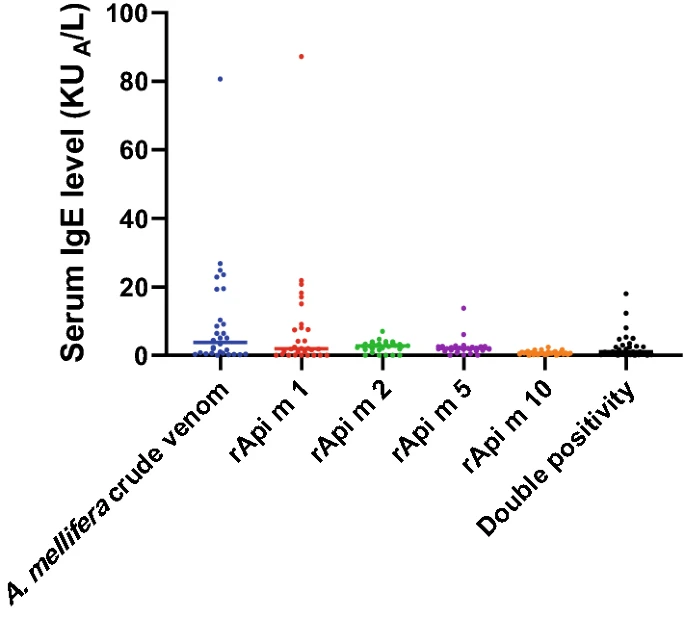Abstract
Background
Allergy to Apis dorsata (Giant Asian Honeybee) venom is the commonest insect allergy in Sri Lanka and South East Asia. However, laboratory diagnosis is difficult as the pure venom and diagnostic reagents are not commercially available.
Objective
This study assessed the use of four recombinant allergens of A. mellifera venom and the passive basophil activation test in the diagnosis of A. dorsata venom anaphylaxis.
Methods
Serum IgE levels to four recombinant allergens of A. mellifera, rApi m 1, 2, 5 and 10 were assessed and compared with serum IgE to the crude venom of A. mellifera or V. vulgaris by Phadia ImmunoCAP, in patients who developed anaphylaxis to A. dorsata stings. Basophil activation in response to venom of A. dorsata or V. affinis was assessed using a passive basophil activation test. Association of the severity of the reaction with basophil activation was compared.
Results
rApi m 1 and 10 combinedly had significant correlation (r = 0.722; p < 0.001) with the crude venom of A. mellifera (Western honeybee) and a higher positivity rate of 90% (27/30). Whereas, IgE reactivity to rApi m 2 or 5 had significant correlation (p = 0.02 and p = 0.005 respectively) with V. vulgaris crude venom. All 30 (100%) were positive to A. dorsata venom in passive BAT; 70% (21/30) had over 80% activation, 96.7% (29/30) had over 60% activation and 100% had over 50% activation. Percentage activation of basophils in patients who had mild or moderate reactions (n = 20) was significantly low (p = 0.02) from that of patients who had severe reactions (n = 10).Conclusions
rApi m 1 and 10 when combined was sensitive for the diagnosis of A. dorsata allergy. This combination had the lowest cross-reactivity rate with Vespula vulgaris. The passive BAT is highly sensitive in A. dorsata allergy. The basophil reactivity was significantly higher in severe anaphylaxis compared to mild/moderate anaphylaxis. This finding should be further explored in further studies.


No comments:
Post a Comment